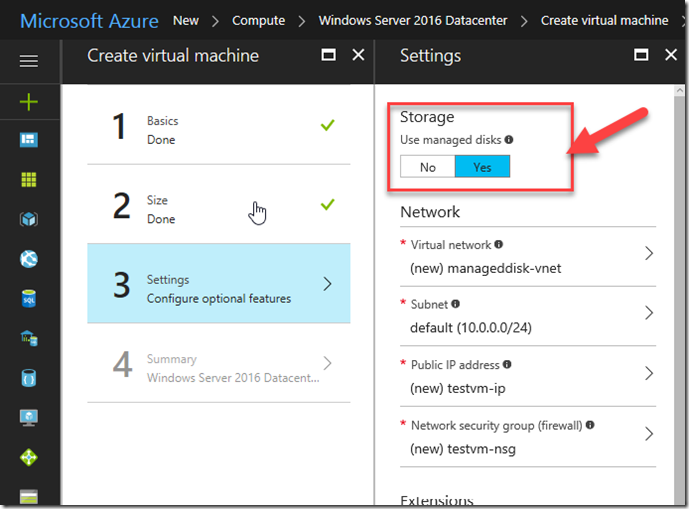Understanding Azure Managed Disks
Hello Folks,
Lately I’ve had a lot of questions about this new item in the Azure portal. Namely managed disks that became generally available on February 8, 2017.
Azure Managed Disks is a way to simplifies disk management for VMs by managing the storage accounts associated with the VM disks. You only need to specify the type (Premium or Standard) and the size of disk you need, and Azure creates and manages the disk for you.
Managed Disks handles storage for you in the background. Up to now, you had to create your own storage accounts where the disks (VHD files) for your VMs were being stored. When scaling up, you had to ensure you created additional storage accounts, so you didn't exceed the IOPS limit for storage with any of your disks. (You can see the Azure Storage Scalability and Performance Targets here) With Managed Disks taking care of your storage needs, you are no longer limited by the storage account limits (such as 20,000 IOPS / account).
Also, you can manage all your custom images (VHD files) in a central location – one storage account per Azure region.
Managed Disks allow you to create up to 10,000 VM disks in a subscription, which will enable you to create thousands of VMs in a single subscription. This also increases the scalability of VM Scale Sets by allowing you to create up to a thousand VMs in a VM Scale Sets using a Marketplace image.
Managed Disks offers 2 performance tiers:
I hope this clears things up. Next week we’ll migrate existing unmanaged Azure Resource Manager VMs to Managed Disks VMs without the need to recreate them.
Cheers!
Pierre Roman@pierreroman

